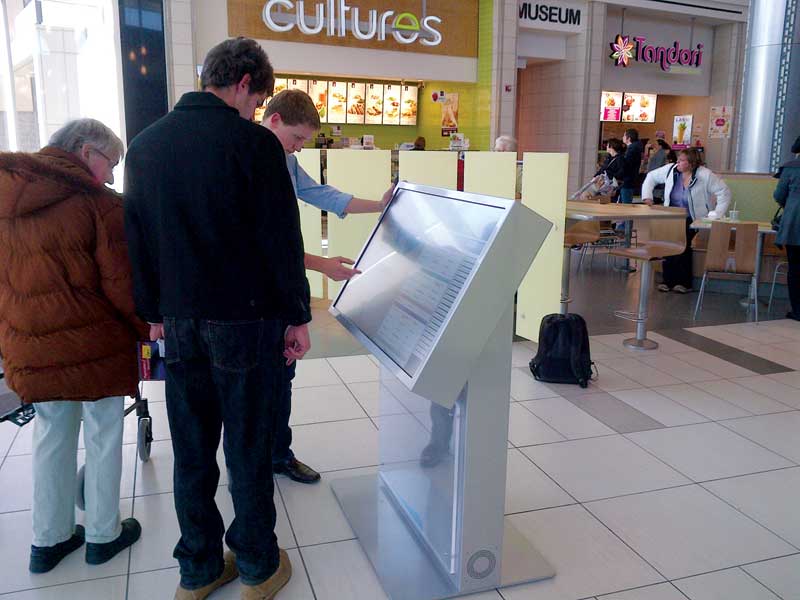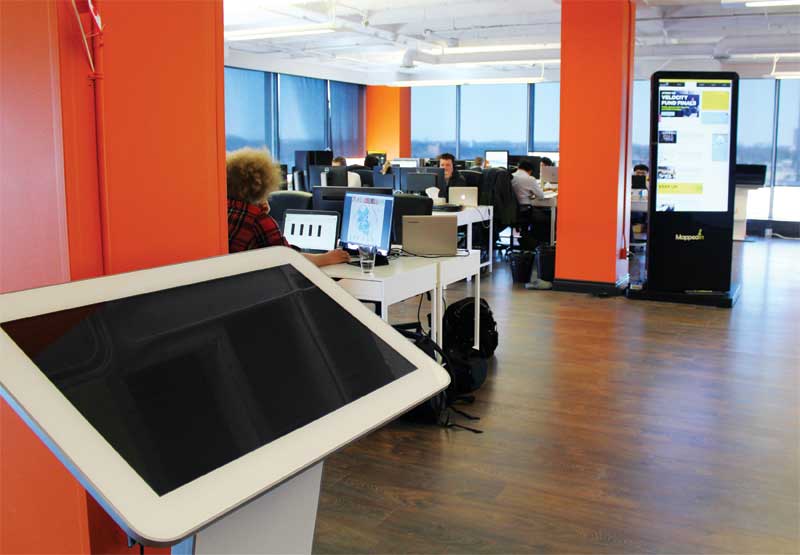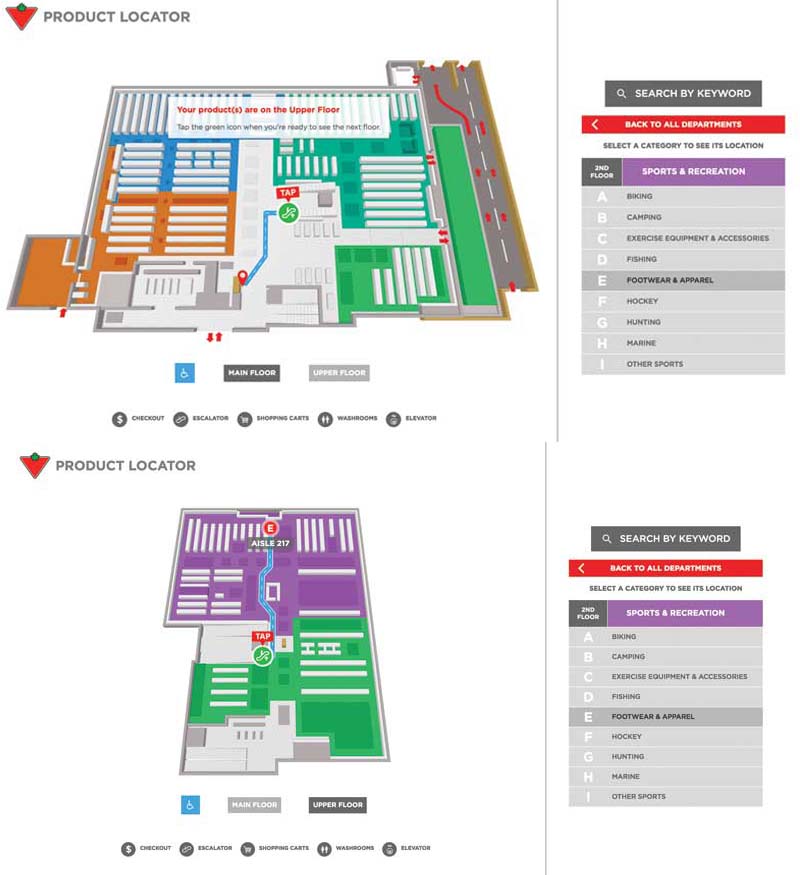
Retail customers are starting to expect the same convenience of search functionality they find online.
That information already existed, but was not being processed and delivered to the public efficiently. Before Mappedin came along, Liu explains, shopping mall managers tended to pay multiple outside agencies to separately translate updated blueprints into displayable content for their in-house digital signage networks.
“Everyone knew why they needed digital wayfinding and had already tried it out,” he says, “but they were paying too many different people and the customer experience was still poor. The technology had to be simplified and made self-serviceable for them. When it’s as easy as using a word processor, then you’ll see information getting updated across all media at the same time. It may not be sexy, but it’s game-changing.”
As experienced engineers, the team at Mappedin was well-positioned to tap into this market by simplifying digital wayfinding with a standardized software platform.
“In the very beginning, we were doing what everyone else was doing—building systems ‘soup to nuts’ and even maintaining all of the data,” says Liu. “We realized the core need for digital wayfinding was a good content management system (CMS). The tool we’d built for ourselves became our flagship product, as we were able to innovate and change it quickly.”
The business case for taking this direction became even clearer after Mappedin pilot-tested a directory for a mall where not only the manager, but also the tenants, were granted access to update the CMS. The ease with which they did so encouraged Liu to prioritize the same approach for other clients.

The company’s offices in Kitchener, Ont., handle software development, services and support, while hardware manufacturing is outsourced.
His team also recognized the need to focus on its specialized strengths. The manufacturing of the company’s interactive directory hardware, which is highly customized for each client, was outsourced to a small group of preferred outside partners.
“I can’t share their names publicly, but they’re sign companies that wanted to add more value to their existing portfolios,” Liu explains. “We work closely with them and they can do this work much better than we could—not just in terms of the manufacturing itself, but also with the geographic scale of their market coverage and the convenience of service they can ensure for our customers.”
Continuous improvement
Indeed, scale has been key to the rapid growth of Mappedin. With clients like Canadian Tire and Cadillac Fairview, the company has rapidly established a nationwide footprint.
“Malls are run nationally, so once you can gain their managers’ trust, they’ll roll you out wide,” Liu explains. “And the nice part of that is you only have one customer to deal with. That’s how we’ve been able to do all of this work with a team of 34 people handling software development, services and support in Kitchener.”

As these screen shots show, Canadian Tire uses Mappedin touch screens to help customers find products within its stores.
Mappedin’s interactive kiosks are currently being used in nine of the 10 biggest malls in Canada. This level of reach, in turn, yields significant analytics that the company can integrate into its future work.
“We work with our customers to build a platform that lasts, which means it needs to be updated year-by-year,” says Liu. “In fact, our CMS gets better month-by-month. As we learn from how our kiosks are being used, we can identify trends, differentiate them from anomalies and continue to improve our interface.”
One particular area targeted for improvement is the physical side of that interface.
“Problems with touch screen technology have plagued us since day one,” Liu says. “We’re just now starting to get projected capacitive films that work well on 1 to 1.4-m (40 to 55-in.) touch screens.”
Investing in growth
It may come as little surprise one of the company’s most notable investors has been Environmental Systems Research Institute (ESRI) Canada, a Toronto-based provider of enterprise geographic information system (GIS) software. Originally a land-use consultancy, ESRI has evolved over time to put geographic information to ever more uses.
At the end of June, Mappedin closed a seed extension after raising its total venture capital financing to $3.5 million, led by Green Century Investments with participation by Amolino and local investors. With the announcement came the hiring of Greg Barber as vice-president (VP) of sales, following 23 years with Microsoft, and Suzanne Farb as interim VP of marketing, who’d also worked with Microsoft before joining retailer Target.
“With Greg and Suzanne on-board, this funding allows us to accelerate our go-to-market strategy while continuing to invest in our platform,” says Liu. “We set ambitious growth goals each year and we’ll continue to bet on ourselves and our consistent record of execution.”





